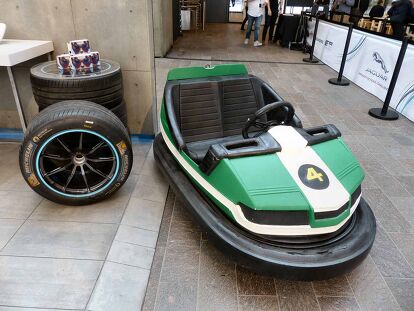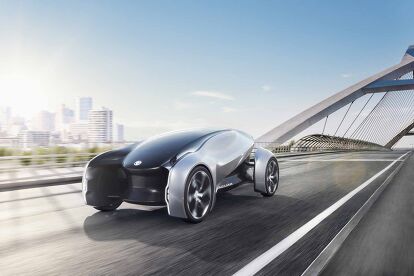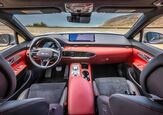Electrification Cuts Through Autonomy Noise at Jaguar Land Rover TechFest 2017
Are you ready for a Jaguar that hums rather than purrs when you turn the key? The British automaker is betting that the answer to that question is ‘yes,’ because at the Jaguar Land Rover TechFest this morning in London, England, the automaker announced that every vehicle introduced past the year 2020 will be electrified in some way.
Electric Jaguars are nothing new (witness the recent I-PACE EV SUV that will be available in dealerships within a year’s time), but the concept that every model line in both the Jaguar and Land Rover portfolios will be offered in at the very least a hybrid design is a more deliberate step in a new direction for both brands. It’s also an interesting echo of what another small-volume automaker under foreign ownership – Volvo – committed to in terms of electrification earlier this year.
SEE ALSO: Jaguar Future Type Concept is What a Jag Will Look Like in 2040
The similarities to Volvo’s initiative extend to encompass the wrinkle that neither Jaguar nor Land Rover is seeking to embrace an entirely-electric future just yet. ‘Electrification’ within this context refers to making hybrid or battery-operated electric vehicles available alongside their gasoline and diesel-powered siblings for each model line. It doesn’t mean an erasure of fossil fuels from the JLR landscape, because unlike several European governments – including France and Germany – no traditional car company has as yet committed to producing a full fleet of electric-only automobiles within a specific time frame. Jaguar was also cagey as to whether existing vehicles would gain electrified models of their own past the 2020 deadline, stating only that it was ‘likely’ to pursue hybrid or EV editions of current SUVs and cars in the future.
The decision to focus on delivering hybrid and BEV options to its buyers is a logical one for Jaguar Land Rover, for a number of reasons that were confirmed by a Jaguar spokesperson at the event. First, ever-stricter corporate average fuel economy (CAFE) regulations are especially difficult for low volume builders like JLR who don’t have the high mileage entry level sales required to spread out the impact from larger-displacement performance vehicles. At the same time, however, that more modest fleet size makes it simpler to implement electrification across the board, especially when more and more products at Jaguar and Land Rover share a common platform.
As has become customary with these types of tech-oriented events, the central plot line of electrification was obscured by speculation on the future of autonomous driving and the supposed wants and needs of vehicle buyers, or rather, ‘mobility customers.’ Some of the panel discussions and exhibitions exemplified the current malaise affecting the auto industry as it becomes increasingly distracted from its core business by exploring technologies, features, and digital connectivity outside of traditional vehicle production and development. Much of this technology is being driven not by actual customer demand, but rather the fear of a future in which car companies are rendered irrelevant by ride sharing and autonomous driving legislation, coupled with the desire to differentiate products in an automotive marketplace that is increasingly crowded with excellent options at all price points.
SEE ALSO: Jaguar Land Rover Previews Steering Wheel with Artificial Intelligence
The Jaguar FUTURE-TYPE concept car shown off at TechFest 2017 spoke to this trend, demonstrating the company’s interpretation of what a post-2040, ‘on-demand’ model for vehicle use could look like. The FUTURE-TYPE imagines a world where fully-autonomous cars are a reality, and where transportation has become a need satisfied by a service rather than actual vehicle ownership. Largely a styling exercise, and based on technologies that are still decades away from the market, the FUTURE-TYPE presentation did make the point of offering ‘assisted driving’ for those who preferred to take the wheel themselves. In fact, Jaguar guaranteed that it will always be possible to choose to drive rather than be driven in its future products, a bold proclamation that few if any other brands in the luxury segment have been willing to make.
No one company can claim to have a clear, exclusive view of the future, as evidenced by the homogeneity of vision that sometimes occludes the automotive industry’s concept of a world where perhaps we have all been transformed from drivers to passengers. Events such as Jaguar Land Rover’s TechFest at the very least make the attempt to engage in a dialogue about what might change and what could remain the same behind the wheel over the coming decades.
Discuss this story on our Jaguar forum.
More by Benjamin Hunting
















































Comments
Join the conversation